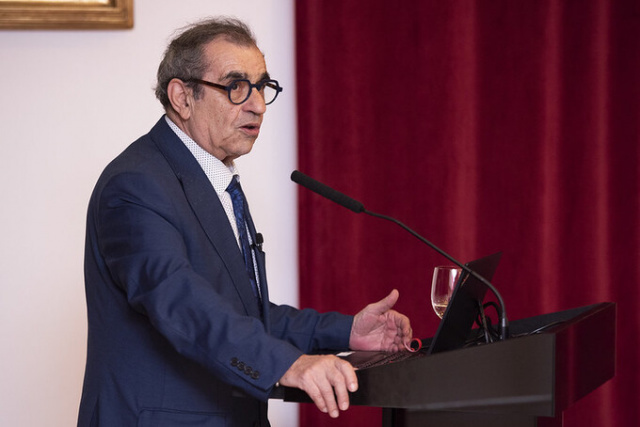New horizons on the typology of East and Southeast Asian languages and more particularly of Sino-Tibetan and Sinitic languages – Inaugural lecture by Honorary Member Alain Peyraube
Honorary Member Alain Peyraube delivered his inaugural academic lecture on 21 November 2023; a summary of the lecture in English, with a picture gallery and video.
Linguists conventionally divide the 6,000-7,000 world languages – with almost half of them facing imminent extinction this century – into approximately 400-500 families, which differ greatly in size. For instance, the Austronesian family comprises over 1,200 languages, while some have merely one language, such as Basque, a well-known isolated linguistic form.
During the 20th century, comparisons among different language families was lacking, and the concept of macro-families was rarely suggested. Since the 1980s, this methodological gap has been corrected, thanks to scholars like Greenberg and his followers, who have revived earlier proposals, for example, Austric and Nostratic (renamed Eurasian) and introduced new macro-families such as Caucasian-Dene and Amerindian. These hypotheses are a topic of much debate within the linguistics community.
Alain Peyraube his presentation examined the situation in East and Southeast Asia, outlining numerous potential grouping proposals and the challenge of presenting unequivocal arguments in favour of any particular one. This extensive geographical area is typically recognised to comprise five significant language families: Sino-Tibetan (categorised into two branches: the Sinitic and the Tibeto-Burman languages); Austronesian; Austro-Asiatic; Tai-Kadai; and Miao-Yao (Hmong-Mien).
Alain Peyraube was born in 1944 in Bordeaux, France. He obtained his PhD in 1976 (Université Paris VIII) in linguistics. He is a linguist and sinologist and a research professor at the Centre de recherches linguistiques sur l'Asie orientale in Paris. He is an internationally influential researcher on the sociolinguistic analysis of Chinese spoken language variants and the transformation of the syntactic system. His results received a great response in connection with the recent transformation of the Chinese language and the stabilisation of grammatical morphemes and the functional analysis of expressions relating to movement and spatial relations. His 2021 synthesis places the processes of Chinese grammatical change in the comprehensive theoretical framework of the possibilities of grammaticalisation. He developed a close working relationship with Hungarian linguistics and cognitive researchers through his scientific organising work (ESF, ERC, AE), which represents the comprehensive integration of modern humanities between countries and disciplines.

